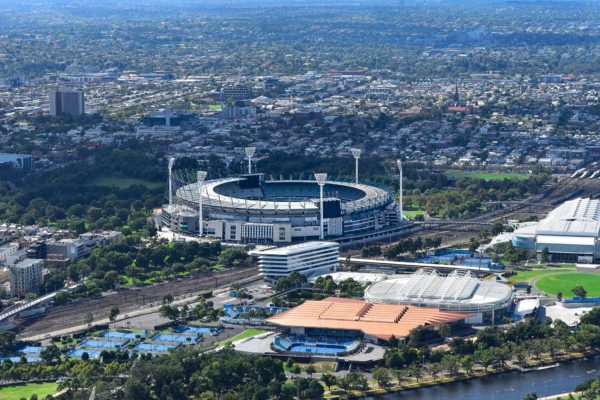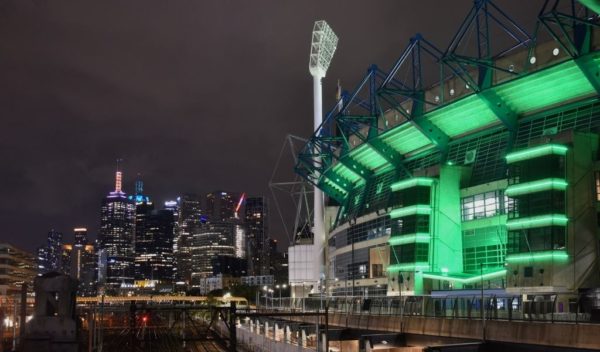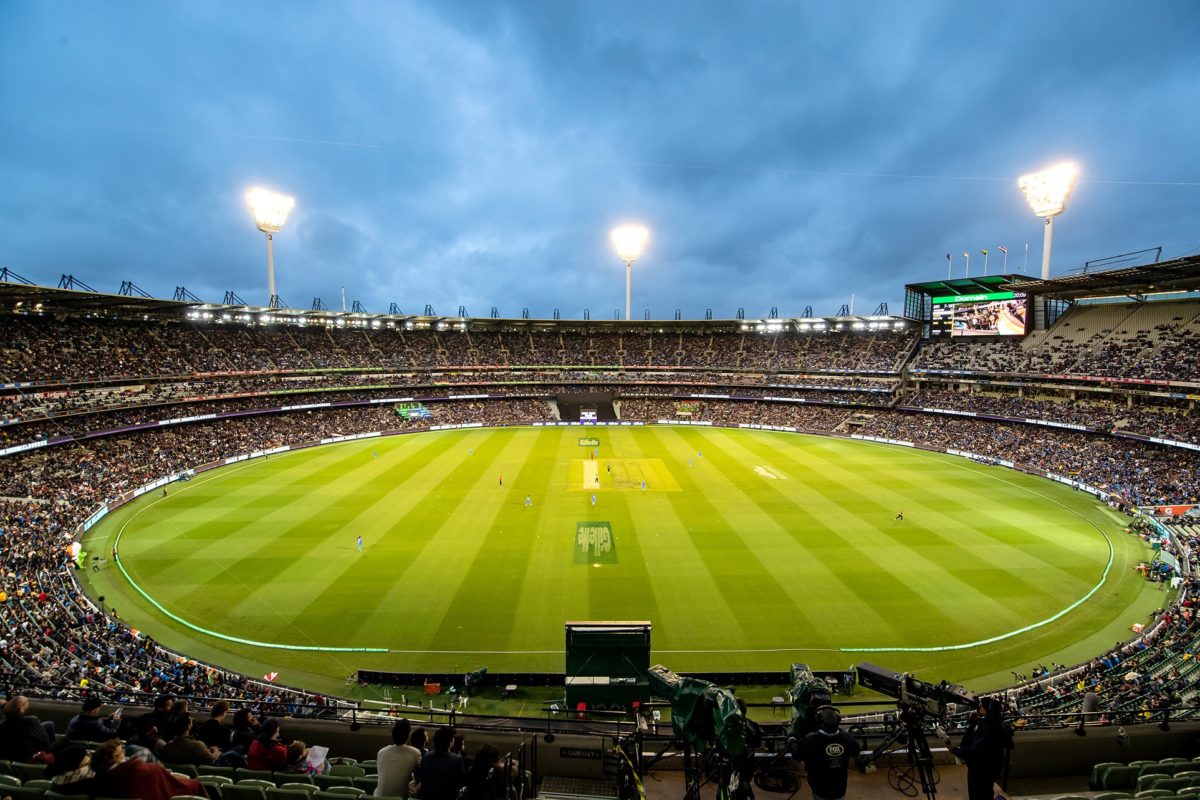The Melbourne Cricket Ground, widely known as the MCG or simply the G, has turned green with electricity provider EnergyAustralia this week confirming that since the start of the year all energy used at the stadium has been supplied by renewable sources including wind and solar PV.
EnergyAustralia said that in less than two months the MCG, which is managed by the Melbourne Cricket Club (MCC) and is one of the most iconic landmarks in the Victorian capital, has cut its greenhouse emissions by close to 1,000 tonnes.
EnergyAustralia chief customer officer Mark Brownfield said the switch to GreenPower-accredited renewable sources is a first for major stadiums in Australia.
“Since 2017 we’ve been helping the MCG become more sustainable. And now we’ve kicked the winning goal – getting the MCG running off 100% renewables in an Australian first,” he said.
The transition to 100% renewables is the latest sustainability initiative to come out of a partnership that commenced in 2016 with EnergyAustralia supplying electricity to the MCG and supporting a range of environmental sustainability initiatives across the precinct.
In 2018, EnergyAustralia helped the MCG achieve another Australian first with the stadium going carbon neutral for the month of September, the ground’s busiest period of the year.
The following year solar-powered lights and security cameras were installed in the neighbouring Yarra Park and in 2020 EnergyAustralia installed 220 solar PV panels along the roofline of the Northern Stand to power the stadium’s water recycling facility which turns sewerage into Class A water.

Image: MCC
MCC chief executive officer Stuart Fox said this latest initiative is a huge moment in the sustainability journey of the MCG which was built in 1853 and remains the largest stadium in the Southern Hemisphere.
“This is a really exciting initiative for the MCC and EnergyAustralia, to work together and provide a first for major stadiums in the country,” he said.
“At the MCG, we’re about inspiring excellence and leading by example, so we hope to see this initiative continued into other stadiums and venues across the country.”
A recent study conducted by the University of New South Wales’ (UNSW) School of Photovoltaic & Renewable Energy Engineering (SPREE) on behalf of the Australian Conservation Foundation (ACF) highlighted the merits of Australian sports stadiums switching to solar.
The report, released in 2021, shows that solar installed across the rooftops of Australia’s major sports stadiums and sporting association head offices could generate around 20,000MWh of clean energy annually.
ACF campaigns director Paul Sinclair said at the time that if cricket, AFL and soccer pursued the initiative, the combined effect would be to mitigate 310,000 tonnes of carbon emissions over two decades, while the sports themselves could save a combined total of $3.7 million each year.

Image: MCG
Australian Test cricket captain Pat Cummins has taken up the solar challenge, recently launching a campaign to have local cricket clubs around the nation install solar PV systems, declaring it is time for the sport to do its bit to tackle climate change.
Cummins earlier this month announced the creation of Cricket for Climate and its solar PV project Solar Clubs, an initiative designed to unlock the solar potential of up to 4,000 community cricket clubs across Australia.
“Few countries in the world can match Australia’s extraordinary potential to generate renewable energy like solar and wind power,” he said. “We’ve got real ambitions; this is just the start.”
EnergyAustralia said it is also about more than just aiding big stadiums make the switch to renewables.
“We’ve got our eye on the big picture too,” Browning said. “We recently updated our Climate Change Statement with a clear commitment to have net zero emissions (scope one, two and three) by 2050, to be out of coal by 2040, and to reduce our direct emissions by 60 percent by 2028/29 relative to 2019-20.
“As part of this, we have announced the early retirement of the Yallourn coal-fired power station in mid-2028 and are building Australia’s first net zero emissions gas and hydrogen capable power plant, pumped hydro energy storage, and large-scale battery storage projects.
“We’re doing, not just dreaming, when it comes to making the clean energy transition a reality.”
This content is protected by copyright and may not be reused. If you want to cooperate with us and would like to reuse some of our content, please contact: editors@pv-magazine.com.









By submitting this form you agree to pv magazine using your data for the purposes of publishing your comment.
Your personal data will only be disclosed or otherwise transmitted to third parties for the purposes of spam filtering or if this is necessary for technical maintenance of the website. Any other transfer to third parties will not take place unless this is justified on the basis of applicable data protection regulations or if pv magazine is legally obliged to do so.
You may revoke this consent at any time with effect for the future, in which case your personal data will be deleted immediately. Otherwise, your data will be deleted if pv magazine has processed your request or the purpose of data storage is fulfilled.
Further information on data privacy can be found in our Data Protection Policy.